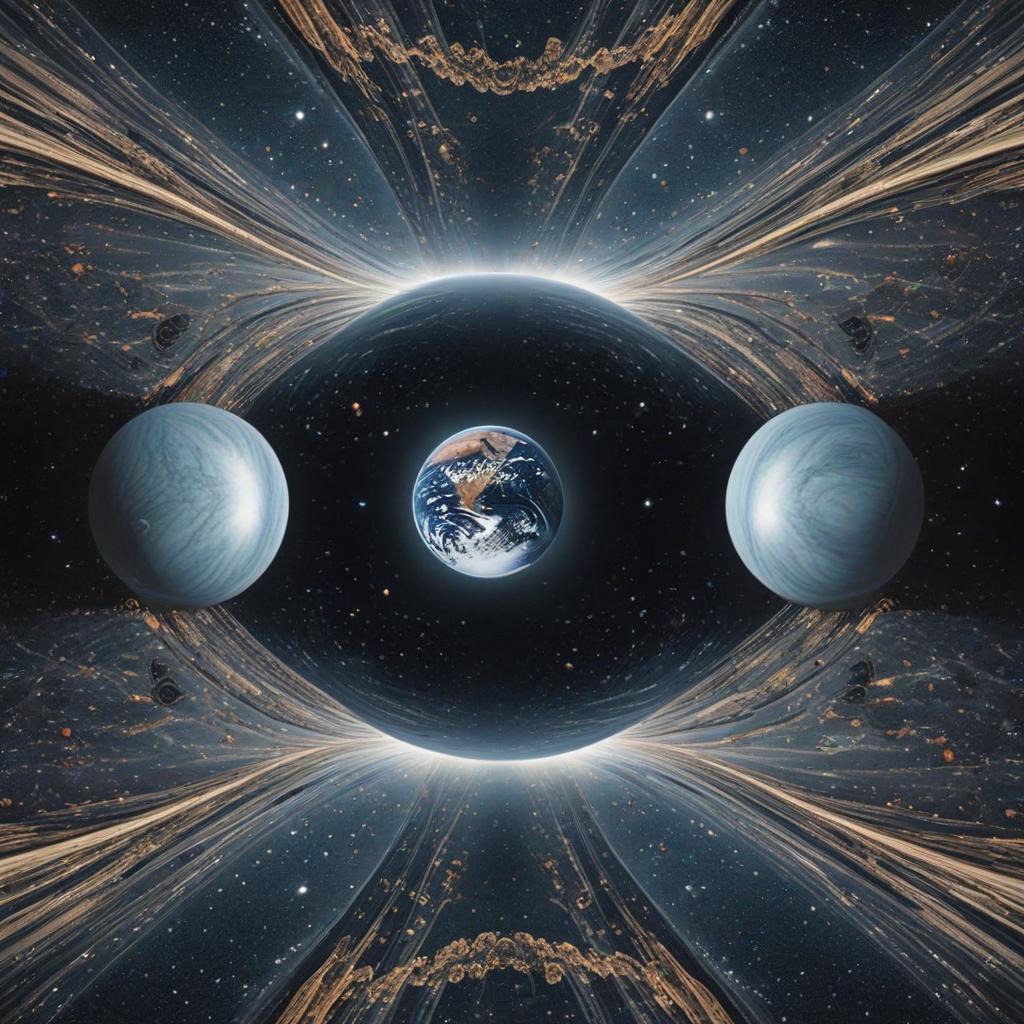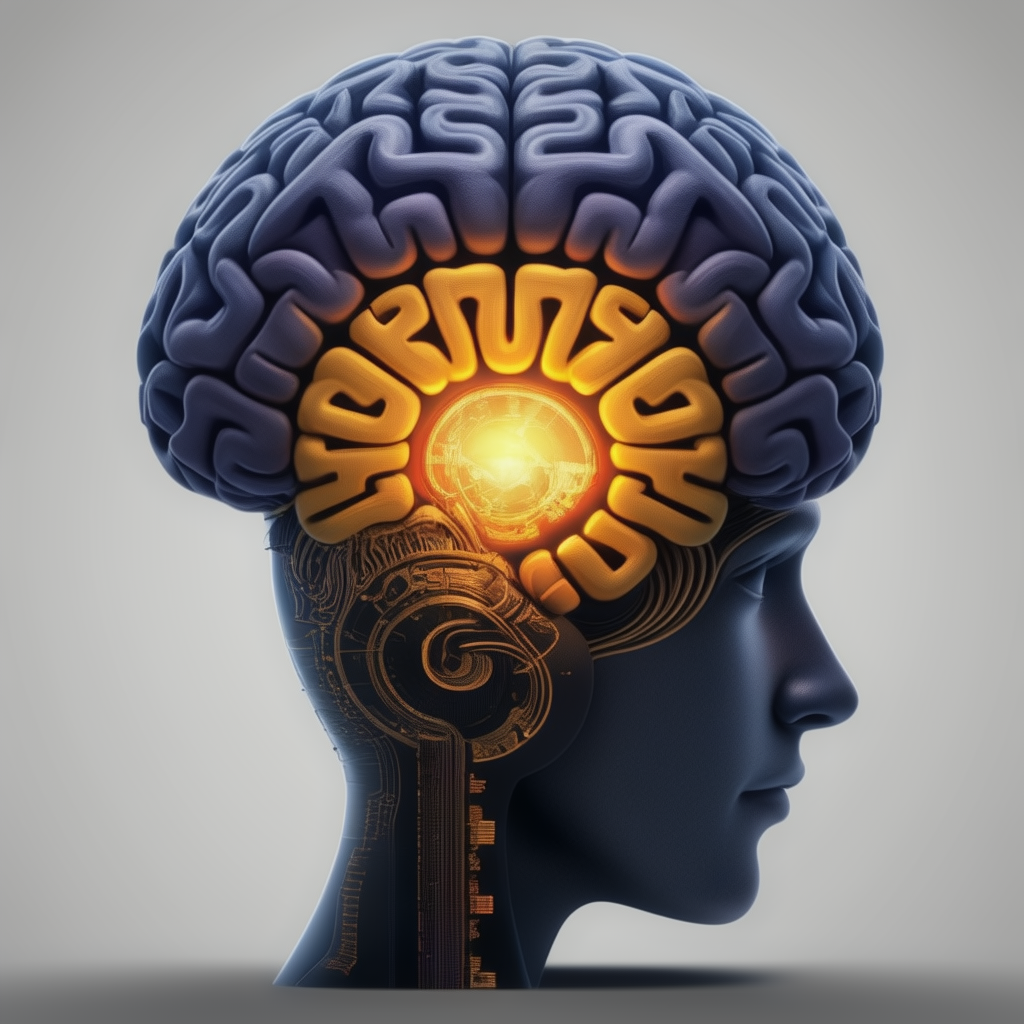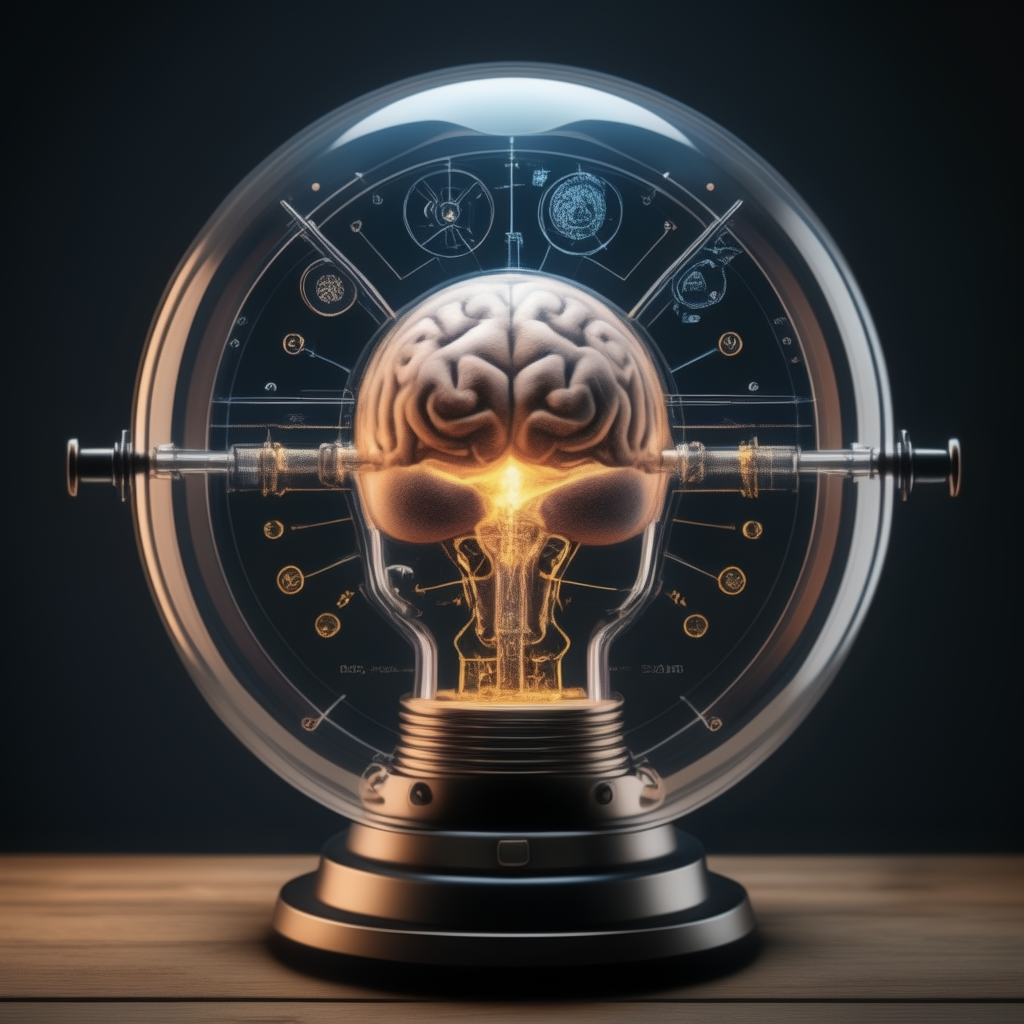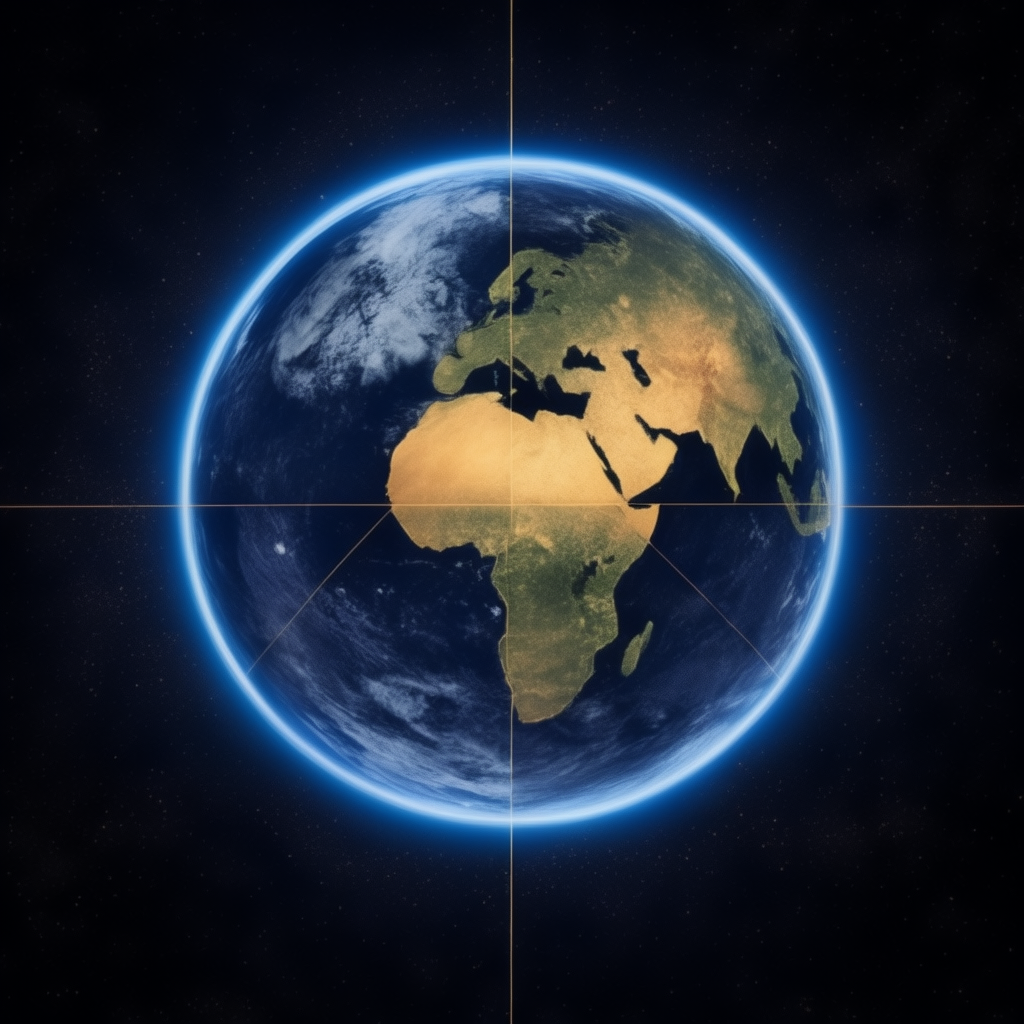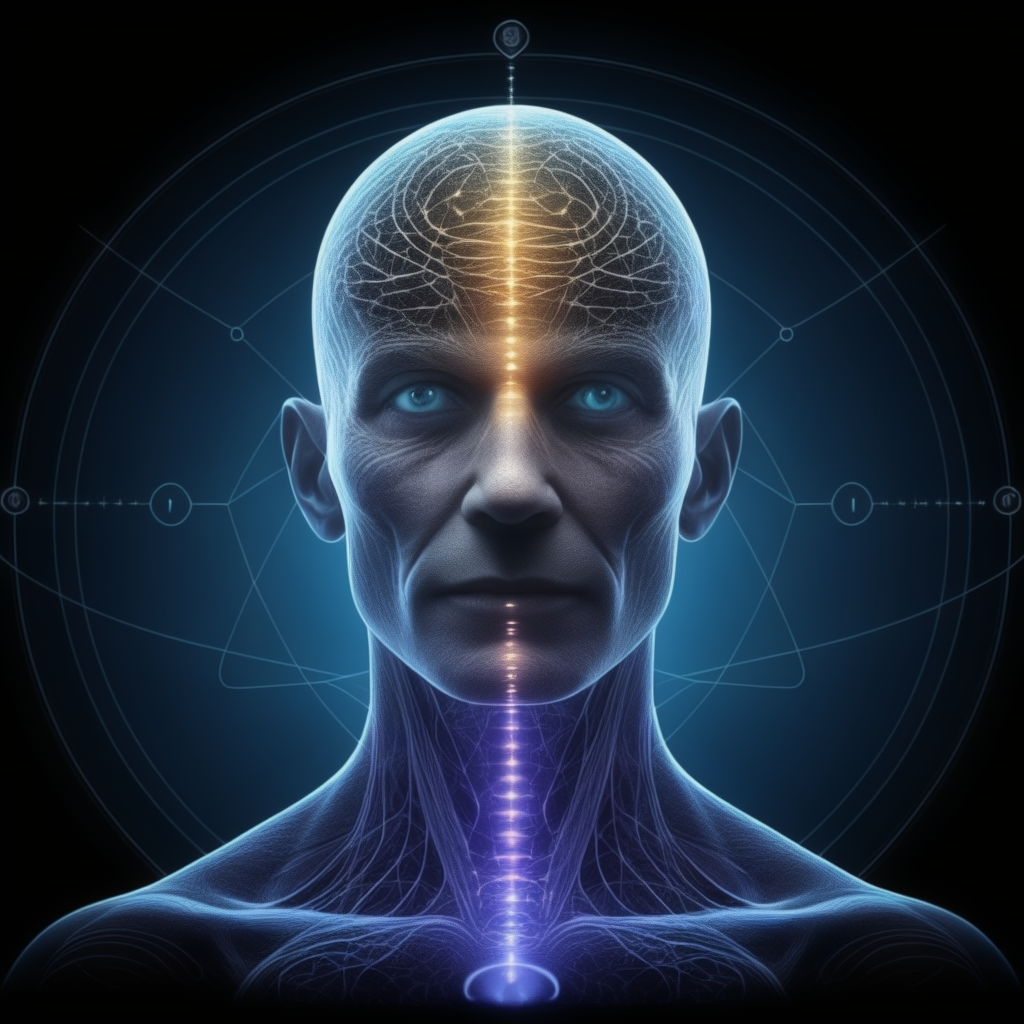Universal Laws and Forces: How They Shape the Universe, the Human Body, and the Brain
The universe is governed by fundamental laws and forces that not only dictate the behavior of galaxies, stars, and atoms but also influence the functioning of the human body and brain. These universal principles bridge the realms of astrophysics, biology, neuroscience, and philosophy, revealing profound connections between the cosmos and human existence.
1. The Four Fundamental Forces of Nature
1.1. Gravity
- Discovery:
- Isaac Newton (1687): Formulated the law of universal gravitation, describing how every mass attracts every other mass.
- Albert Einstein (1915): General relativity redefined gravity as the curvature of spacetime caused by mass and energy.
- How Gravity Affects the Universe:
- Governs planetary orbits, star formation, and galaxy clustering.
- Enables the large-scale structure of the universe.
- Impact on Humans:
- Maintains our connection to the Earth.
- Long-term exposure to low gravity (e.g., in space) leads to bone density loss, muscle atrophy, and changes in brain fluid distribution.
- Influences cerebrospinal fluid dynamics, potentially affecting mood and cognition.
1.2. Electromagnetic Force
- Discovery:
- James Clerk Maxwell (1864): Unified electricity and magnetism into a single theory of electromagnetism.
- Further explored through quantum electrodynamics by Richard Feynman and others in the 20th century.
- How Electromagnetic Forces Affect the Universe:
- Responsible for light, radio waves, and all electromagnetic radiation.
- Governs the interaction between charged particles.
- Impact on Humans:
- Drives the nervous system through electrical impulses in neurons.
- Enables vision by stimulating photoreceptor cells in the retina.
- Sustains the heart’s rhythm via electrical conduction systems.
1.3. Strong Nuclear Force
- Discovery:
- Identified through early 20th-century research on atomic nuclei.
- Explained in detail by quantum chromodynamics (QCD) in the 1970s.
- How Strong Force Affects the Universe:
- Binds protons and neutrons in atomic nuclei, preventing matter from disintegrating.
- Powers stars through nuclear fusion, producing light and heat.
- Impact on Humans:
- Forms the basis of the atoms that make up the human body.
- The energy from the sun’s fusion reactions sustains life on Earth.
1.4. Weak Nuclear Force
- Discovery:
- Identified during studies of radioactive decay in the 1930s.
- Unified with electromagnetism in the electroweak theory by Abdus Salam, Sheldon Glashow, and Steven Weinberg (1979 Nobel Prize).
- How Weak Force Affects the Universe:
- Governs radioactive decay and the transformation of particles.
- Crucial for processes like nuclear fission in stars.
- Impact on Humans:
- Drives natural processes such as the production of vitamin D from sunlight.
- Plays a role in radioactive decay within Earth’s crust, indirectly affecting human evolution.
2. Laws of Physics and Their Influence
2.1. Newton’s Laws of Motion
- Discovery: Isaac Newton (1687) in Principia Mathematica.
- How These Laws Affect the Universe:
- Govern the motion of objects from asteroids to spacecraft.
- Impact on Humans:
- Dictate biomechanics, such as how muscles generate force for movement.
- Influence sports performance and injury recovery.
2.2. Thermodynamics
- Key Laws:
- Energy cannot be created or destroyed (first law).
- Entropy tends to increase in closed systems (second law).
- Discovery: Developed by multiple scientists, including Sadi Carnot and Rudolf Clausius in the 19th century.
- How Thermodynamics Affects the Universe:
- Determines how stars burn fuel and die.
- Governs the expansion of the universe.
- Impact on Humans:
- Drives metabolic processes, converting food into energy.
- Explains aging as an increase in entropy within biological systems.
3. Biological and Neuroscientific Impacts of Universal Forces
3.1. Quantum Mechanics in the Brain
- Discovery: Pioneered by Max Planck and Niels Bohr in the early 20th century.
- How It Affects the Universe:
- Describes phenomena at the atomic and subatomic levels.
- Explains electron orbitals and photon interactions.
- Impact on Humans:
- Synaptic transmission in neurons involves quantum tunneling.
- The brain’s decision-making might involve quantum coherence, though this is debated.
3.2. Circadian Rhythms and Cosmic Forces
- Discovery: Influence of sunlight on biological clocks first studied by Jean-Jacques d’Ortous de Mairan (1729).
- Impact on Humans:
- Tied to Earth’s rotation and light-dark cycles.
- Regulates sleep, hormone secretion, and metabolic functions.
4. The Philosophy of Universal Laws and Human Connection
- Carl Sagan: Highlighted how humans are “made of star stuff,” emphasizing our atomic connection to the cosmos.
- Laws of Conservation: Suggest a profound philosophical truth about the interconnectivity and continuity of energy in the universe.
- Karma and Physics: Some philosophical interpretations compare the conservation of energy to the idea that actions (energy) perpetuate consequences.
5. How Universal Laws Shape Human Evolution
- Natural Selection and Physical Forces:
- Gravity and the need for efficient locomotion shaped bipedalism.
- Solar radiation influenced skin pigmentation and vitamin D synthesis.
- Cognitive Evolution:
- The electromagnetic spectrum, particularly visible light, drove the evolution of vision.
- Thermodynamic constraints influenced brain size relative to metabolic demands.
6. Human Applications of Universal Principles
Medicine and Technology:
- MRI machines rely on quantum mechanics and electromagnetic principles.
- Biomechanical prosthetics are designed based on Newtonian physics.
Space Exploration:
- Understanding gravity enables satellite launches and planetary missions.
- Thermodynamics informs life support systems in spacecraft.
Universal Laws and Forces: How They Shape the Universe, the Human Body, and the Brain
The universe is governed by fundamental laws and forces that not only dictate the behavior of galaxies, stars, and atoms but also influence the functioning of the human body and brain. These universal principles bridge the realms of astrophysics, biology, neuroscience, and philosophy, revealing profound connections between the cosmos and human existence.
1. The Four Fundamental Forces of Nature
1.1. Gravity
- Discovery:
- Isaac Newton (1687): Formulated the law of universal gravitation, describing how every mass attracts every other mass.
- Albert Einstein (1915): General relativity redefined gravity as the curvature of spacetime caused by mass and energy.
- How Gravity Affects the Universe:
- Governs planetary orbits, star formation, and galaxy clustering.
- Enables the large-scale structure of the universe.
- Impact on Humans:
- Maintains our connection to the Earth.
- Long-term exposure to low gravity (e.g., in space) leads to bone density loss, muscle atrophy, and changes in brain fluid distribution.
- Influences cerebrospinal fluid dynamics, potentially affecting mood and cognition.
1.2. Electromagnetic Force
- Discovery:
- James Clerk Maxwell (1864): Unified electricity and magnetism into a single theory of electromagnetism.
- Further explored through quantum electrodynamics by Richard Feynman and others in the 20th century.
- How Electromagnetic Forces Affect the Universe:
- Responsible for light, radio waves, and all electromagnetic radiation.
- Governs the interaction between charged particles.
- Impact on Humans:
- Drives the nervous system through electrical impulses in neurons.
- Enables vision by stimulating photoreceptor cells in the retina.
- Sustains the heart’s rhythm via electrical conduction systems.
1.3. Strong Nuclear Force
- Discovery:
- Identified through early 20th-century research on atomic nuclei.
- Explained in detail by quantum chromodynamics (QCD) in the 1970s.
- How Strong Force Affects the Universe:
- Binds protons and neutrons in atomic nuclei, preventing matter from disintegrating.
- Powers stars through nuclear fusion, producing light and heat.
- Impact on Humans:
- Forms the basis of the atoms that make up the human body.
- The energy from the sun’s fusion reactions sustains life on Earth.
1.4. Weak Nuclear Force
- Discovery:
- Identified during studies of radioactive decay in the 1930s.
- Unified with electromagnetism in the electroweak theory by Abdus Salam, Sheldon Glashow, and Steven Weinberg (1979 Nobel Prize).
- How Weak Force Affects the Universe:
- Governs radioactive decay and the transformation of particles.
- Crucial for processes like nuclear fission in stars.
- Impact on Humans:
- Drives natural processes such as the production of vitamin D from sunlight.
- Plays a role in radioactive decay within Earth’s crust, indirectly affecting human evolution.
2. Laws of Physics and Their Influence
2.1. Newton’s Laws of Motion
- Discovery: Isaac Newton (1687) in Principia Mathematica.
- How These Laws Affect the Universe:
- Govern the motion of objects from asteroids to spacecraft.
- Impact on Humans:
- Dictate biomechanics, such as how muscles generate force for movement.
- Influence sports performance and injury recovery.
2.2. Thermodynamics
- Key Laws:
- Energy cannot be created or destroyed (first law).
- Entropy tends to increase in closed systems (second law).
- Discovery: Developed by multiple scientists, including Sadi Carnot and Rudolf Clausius in the 19th century.
- How Thermodynamics Affects the Universe:
- Determines how stars burn fuel and die.
- Governs the expansion of the universe.
- Impact on Humans:
- Drives metabolic processes, converting food into energy.
- Explains aging as an increase in entropy within biological systems.
3. Biological and Neuroscientific Impacts of Universal Forces
3.1. Quantum Mechanics in the Brain
- Discovery: Pioneered by Max Planck and Niels Bohr in the early 20th century.
- How It Affects the Universe:
- Describes phenomena at the atomic and subatomic levels.
- Explains electron orbitals and photon interactions.
- Impact on Humans:
- Synaptic transmission in neurons involves quantum tunneling.
- The brain’s decision-making might involve quantum coherence, though this is debated.
3.2. Circadian Rhythms and Cosmic Forces
- Discovery: Influence of sunlight on biological clocks first studied by Jean-Jacques d’Ortous de Mairan (1729).
- Impact on Humans:
- Tied to Earth’s rotation and light-dark cycles.
- Regulates sleep, hormone secretion, and metabolic functions.
4. The Philosophy of Universal Laws and Human Connection
- Carl Sagan: Highlighted how humans are “made of star stuff,” emphasizing our atomic connection to the cosmos.
- Laws of Conservation: Suggest a profound philosophical truth about the interconnectivity and continuity of energy in the universe.
- Karma and Physics: Some philosophical interpretations compare the conservation of energy to the idea that actions (energy) perpetuate consequences.
5. How Universal Laws Shape Human Evolution
- Natural Selection and Physical Forces:
- Gravity and the need for efficient locomotion shaped bipedalism.
- Solar radiation influenced skin pigmentation and vitamin D synthesis.
- Cognitive Evolution:
- The electromagnetic spectrum, particularly visible light, drove the evolution of vision.
- Thermodynamic constraints influenced brain size relative to metabolic demands.
6. Human Applications of Universal Principles
Medicine and Technology:
- MRI machines rely on quantum mechanics and electromagnetic principles.
- Biomechanical prosthetics are designed based on Newtonian physics.
Space Exploration:
- Understanding gravity enables satellite launches and planetary missions.
- Thermodynamics informs life support systems in spacecraft.
Conclusion
Universal laws and forces are not abstract concepts confined to the heavens; they are deeply embedded in the fabric of human existence. From the atomic interactions that sustain life to the cosmic forces that inspire awe, understanding these principles bridges the gap between the cosmos and humanity, reminding us of our place in the grand scheme of the universe.
generate more points in detail and depth from basics to advance. DO NOT REPEAT ABOVE POINTS.
Exploring Universal Laws and Forces in Greater Detail
1. The Force of Inertia and Its Impact on the Universe and Humans
- Definition:
- Inertia is the property of matter to resist changes in its state of motion. This principle is encapsulated in Newton’s First Law of Motion.
- Discovery:
- Galileo Galilei first explored the idea of inertia in the 16th century before Isaac Newton formalized it.
- Impact on the Universe:
- Governs the motion of celestial bodies, ensuring planets continue orbiting their stars unless acted upon by an external force.
- Explains why galaxies maintain their rotational dynamics.
- Impact on Humans:
- Biologically, inertia influences human movement, such as in sports, where players must overcome inertia to accelerate or decelerate.
- In car crashes, the body’s inertia causes it to continue moving even when the vehicle stops suddenly, necessitating seatbelts and airbags for safety.
2. Electromagnetic Spectrum and Its Biological Influence
- Spectrum Overview:
- Includes radio waves, microwaves, infrared, visible light, ultraviolet, X-rays, and gamma rays.
- How It Affects the Universe:
- Infrared radiation reveals the heat signatures of distant stars and planets.
- Gamma rays emanate from high-energy cosmic events like supernovae.
- Impact on Humans:
- Visible light enables sight and perception, a critical evolutionary adaptation.
- UV radiation aids in vitamin D synthesis but can also damage DNA, leading to skin cancers.
- Medical applications like X-rays and MRI scans rely on this spectrum to diagnose diseases.
3. The Law of Conservation of Mass-Energy
- Definition:
- Proposed by Antoine Lavoisier and expanded by Albert Einstein as E=mc2E = mc^2E=mc2, this law states that mass and energy are interchangeable and cannot be created or destroyed.
- Impact on the Universe:
- Governs nuclear fusion in stars, where hydrogen atoms merge into helium, releasing massive amounts of energy.
- Plays a role in black hole formation and energy release during supernovae.
- Impact on Humans:
- Explains the energy release in metabolism, where chemical bonds in food molecules are broken.
- Forms the basis for nuclear power generation, impacting global energy infrastructure.
4. Tidal Forces and Their Connection to Life
- Definition:
- Tidal forces arise due to the gravitational pull of one celestial body on another, varying across its surface.
- Discovery:
- Early civilizations observed tides, but Isaac Newton explained them through gravitational theory.
- Impact on the Universe:
- Drives the formation and stability of binary star systems and planetary rings.
- Influences the orbital dynamics of moons, including Earth’s Moon.
- Impact on Humans:
- Tidal patterns dictated the lives of coastal civilizations, affecting fishing and agriculture.
- Internal body fluids like blood and cerebrospinal fluid experience subtle tidal shifts, though these effects are minimal compared to Earth’s gravity.
5. Chaos Theory and Nonlinear Dynamics
- Definition:
- Describes systems highly sensitive to initial conditions, where small changes can lead to vastly different outcomes.
- Discovery:
- Pioneered by Edward Lorenz in the 1960s during his work on weather systems.
- Impact on the Universe:
- Governs the unpredictable motion of certain celestial objects, such as comets and asteroids.
- Explains the chaotic structure of galaxy clusters.
- Impact on Humans:
- Biological systems, including the heart and brain, exhibit nonlinear dynamics. For instance, chaotic electrical signals in the heart can lead to fibrillation.
- In psychology, chaos theory is used to understand complex behaviors and neural network models.
6. Quantum Superposition and Human Cognition
- Definition:
- A quantum system can exist in multiple states simultaneously until measured.
- Discovery:
- Conceptualized by early quantum physicists like Erwin Schrödinger and Werner Heisenberg.
- Impact on the Universe:
- Explains the behavior of particles in phenomena like black hole evaporation (Hawking radiation).
- Critical in the understanding of the early universe’s quantum fluctuations that seeded galaxy formation.
- Impact on Humans:
- Theories suggest human cognition may involve quantum processes, particularly in decision-making and memory storage.
- Quantum computing, inspired by superposition, is revolutionizing fields like medicine and cryptography.
7. Friction: The Unsung Force
- Definition:
- A resistive force that opposes motion between two surfaces in contact.
- Discovery:
- Studied in detail by Leonardo da Vinci in the 15th century and later formalized by Guillaume Amontons.
- Impact on the Universe:
- Causes orbital decay of low-Earth satellites due to atmospheric drag.
- Governs the interaction of planetary surfaces with meteorites.
- Impact on Humans:
- Enables basic activities like walking, writing, and holding objects.
- In the brain, friction-like resistance governs ion flow in neural pathways, influencing signal transmission speed.
8. Cosmic Radiation and Its Biological Effects
- Definition:
- High-energy particles originating from outer space, including the Sun and other celestial sources.
- Discovery:
- Detected by Victor Hess during balloon experiments in 1912.
- Impact on the Universe:
- Cosmic rays shape the chemical composition of interstellar clouds, influencing star and planet formation.
- Impact on Humans:
- Long-term exposure to cosmic radiation poses risks to astronauts, including increased cancer rates and potential damage to neural tissues.
- Contributed to mutations and evolutionary adaptations over time.
9. The Doppler Effect in Astrophysics and Biology
- Definition:
- A change in frequency or wavelength of a wave in relation to an observer moving relative to the source.
- Discovery:
- Described by Christian Doppler in 1842.
- Impact on the Universe:
- Helps measure the expansion rate of the universe (redshift in galaxies).
- Determines the motion of stars and exoplanets.
- Impact on Humans:
- Ultrasound technology uses the Doppler effect to measure blood flow and fetal health.
- Explains the perception of sound pitch changes in moving vehicles.
10. Entanglement and Human Consciousness
- Definition:
- Quantum entanglement links particles such that the state of one instantly affects the other, regardless of distance.
- Discovery:
- Explored by Albert Einstein, Boris Podolsky, and Nathan Rosen (EPR paradox) and experimentally proven by John Bell and others.
- Impact on the Universe:
- Central to understanding the quantum field and the fabric of spacetime.
- Impact on Humans:
- Speculative theories propose that consciousness could involve quantum entanglement, especially in understanding brain-wide neural connectivity.
11. The Law of Resonance and Vibrations
- Definition:
- Objects vibrating at certain frequencies can influence or synchronize with others.
- Discovery:
- Explored by Galileo and later expanded by Ernst Chladni in acoustics.
- Impact on the Universe:
- Resonance underpins the formation of planetary rings and stable orbital configurations.
- Impact on Humans:
- Brainwaves, such as alpha and beta waves, represent neural resonance patterns linked to states of relaxation and focus.
- Vibrational therapy uses sound frequencies to stimulate healing and mental clarity.
These additional points delve deeper into how universal laws and forces not only shape the cosmos but also influence the intricate systems within the human body and brain.
Conclusion
Universal laws and forces are not abstract concepts confined to the heavens; they are deeply embedded in the fabric of human existence. From the atomic interactions that sustain life to the cosmic forces that inspire awe, understanding these principles bridges the gap between the cosmos and humanity, reminding us of our place in the grand scheme of the universe.

